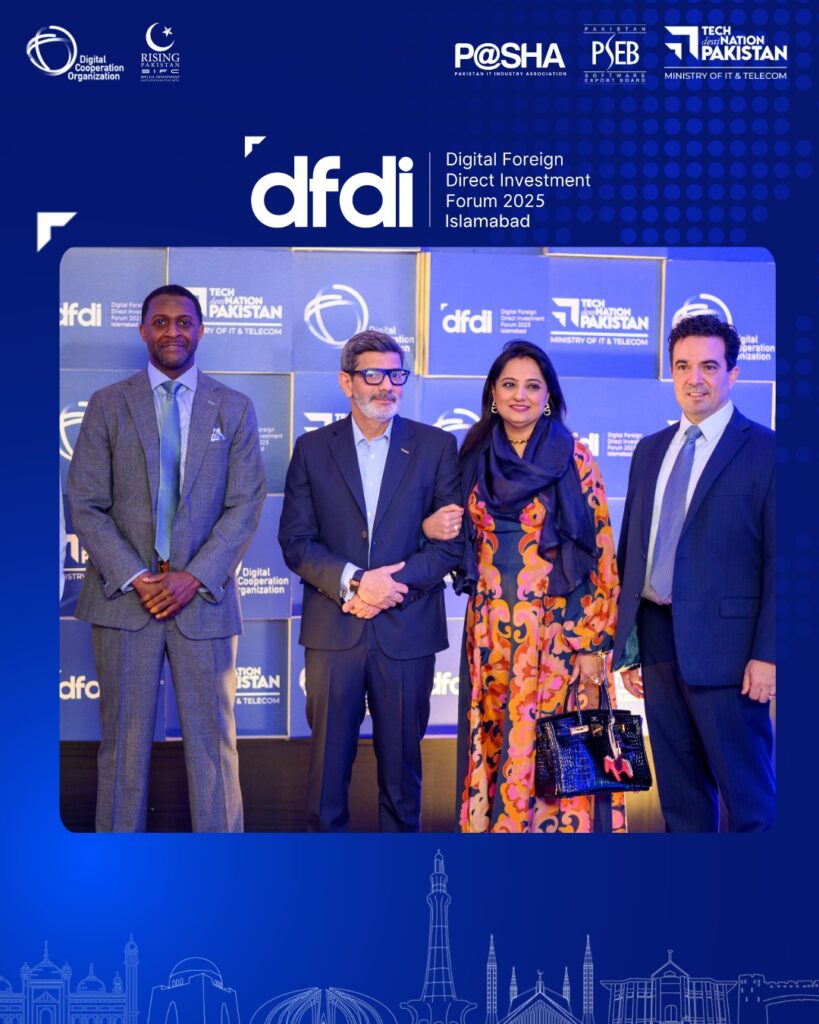Table of Contents
🟢 Benefits of DFDI for Sustainable Development
Benefits of DFDI for sustainable development are becoming increasingly recognized in global economic strategies. Digital Foreign Direct Investment (DFDI) is not only a catalyst for economic growth, but also a transformative force that fosters innovation, environmental responsibility, and social progress. In a world racing to achieve the Sustainable Development Goals (SDGs), DFDI offers the digital infrastructure and cross-border support needed to build resilient, eco-conscious economies.
🌍 Understanding the Benefits of DFDI for Sustainable Economies
One of the key benefits of DFDI for sustainable development lies in its ability to connect emerging economies to global digital markets. With investments in digital infrastructure, cloud services, and e-governance platforms, developing countries can leapfrog traditional growth barriers and embrace cleaner, smarter solutions.
- DFDI reduces the carbon footprint through digitalization.
- Enhances access to sustainable fintech and e-services.
- Strengthens transparency in governance through digital platforms.

🏗️ Benefits of DFDI for Sustainable Infrastructure
The benefits of DFDI for sustainable infrastructure are critical in transforming how nations build and maintain their foundational systems. Digital Foreign Direct Investment plays a vital role in upgrading infrastructure to be not only modern and efficient, but also environmentally responsible and resilient.
Traditional infrastructure projects often lead to high energy consumption, carbon emissions, and unsustainable material use. In contrast, infrastructure driven by DFDI emphasizes smart technologies, resource optimization, and climate-conscious planning. This shift is essential for nations striving to meet the United Nations Sustainable Development Goals (SDGs), particularly SDG 9 (Industry, Innovation, and Infrastructure) and SDG 11 (Sustainable Cities and Communities).
🌐 Smart Cities and Intelligent Infrastructure
One of the most impactful benefits of DFDI for sustainable development is the creation of smart cities. These cities use digital technologies—such as IoT, AI, and data analytics—to improve urban management and reduce environmental impact.
Examples of DFDI-backed smart infrastructure include:
- Smart traffic systems that reduce congestion and emissions.
- Sensor-based waste management that minimizes landfill overflow.
- Real-time energy monitoring for efficient electricity use.
These digital solutions help cities grow without overburdening natural resources.
⚡ Clean Energy Infrastructure
DFDI enables investment in renewable energy infrastructure through smart grids, energy-efficient storage systems, and cloud-based energy monitoring. These platforms make it easier to:
- Track solar and wind energy generation in real time.
- Distribute power more efficiently using AI-based load balancing.
- Reduce energy losses through blockchain-based transactions.
The benefits of DFDI for sustainable energy systems are especially crucial for developing countries that face frequent power shortages and want to bypass polluting fossil-fuel-based grids.
📡 Digital Infrastructure for Remote Areas
Another key benefit of DFDI for sustainable infrastructure is the ability to extend digital services into rural and underserved regions. With the help of satellite internet, fiber-optic networks, and mobile broadband systems funded through DFDI, governments can connect remote communities to the digital economy.
This has a ripple effect by enabling:
- Remote education and e-learning platforms.
- Telehealth and emergency digital response systems.
- Digital banking and micro-finance services.
All these reduce the need for physical travel, cutting transportation emissions and fostering local self-sufficiency.
🧱 Sustainable Construction Techniques
DFDI often brings foreign partners who introduce advanced, green construction technologies such as:
- 3D-printed building components using recycled materials.
- Modular construction methods that minimize waste.
- Smart HVAC systems that cut energy use in commercial buildings.
By incorporating these technologies, infrastructure development becomes more energy-efficient and sustainable.
🚄 Green Transportation Networks
Through DFDI, countries are increasingly investing in digital transportation systems, including:
- Electric vehicle (EV) charging networks.
- GPS-enabled public transit.
- Automated toll collection and traffic management.
These improvements lead to reduced traffic congestion, lower emissions, and more sustainable mobility in urban areas.ar-powered internet grids and eco-friendly logistics hubs.
💼 Economic Benefits of DFDI for Sustainable Growth
The economic benefits of DFDI for sustainable growth are among the most transformative outcomes of digital foreign direct investment. By channeling international capital into digital sectors, DFDI helps economies evolve beyond traditional, resource-intensive models and embrace innovation, resilience, and inclusivity.
Unlike traditional FDI, which often focuses on physical industries such as mining or manufacturing, DFDI supports knowledge-based, tech-driven ecosystems. This digital-first investment approach fuels economic diversification, job creation, and higher productivity—all of which are critical for long-term, sustainable development.
🌐 Diversification of the Economic Base
One of the major benefits of DFDI for sustainable economic growth is the diversification of a country’s industrial portfolio. Nations no longer have to rely solely on agriculture, oil, or other extractive industries.
Instead, with DFDI, countries can develop new digital sectors such as:
- Fintech
- E-commerce
- Health tech
- Digital education
- Cybersecurity services
These sectors are not only more environmentally friendly but are also aligned with global digital trends, allowing countries to remain competitive on the world stage.
👩💻 Creation of High-Quality Digital Jobs
A core benefit of DFDI for sustainable employment is the creation of future-ready jobs. DFDI brings in new technologies and business models, which demand a workforce skilled in:
- Data analytics
- Cloud computing
- App development
- Digital marketing
- UX/UI design
These jobs typically offer better wages, remote work flexibility, and career progression opportunities—making them essential for youth and women, especially in developing countries.
📈 Boost in Productivity and Innovation
Another significant benefit of DFDI for sustainable economies is the increase in national productivity. Digital investments streamline processes, automate routine tasks, and introduce AI-powered solutions, helping businesses operate more efficiently.
Examples include:
- Automated agriculture systems that improve crop yields.
- AI chatbots for 24/7 customer service.
- E-payment systems that reduce transaction times and costs.
This kind of digital innovation not only raises GDP but also supports green economic models that reduce waste and maximize resources.
💰 Growth in Digital Entrepreneurship and Startups
DFDI encourages a thriving startup ecosystem by introducing venture capital, incubation support, and access to international networks. This fosters local innovation and empowers entrepreneurs to build scalable businesses with global impact.
Some standout benefits of DFDI for sustainable entrepreneurship include:
- Access to international mentorship and tech hubs.
- Cross-border partnerships and market entry support.
- Lower barriers to entry for tech-driven business ideas.
In turn, these startups often solve real-world problems—like access to clean water, education, or green logistics—while generating revenue and employment.
🌍 Financial Inclusion and Economic Equity
Through DFDI, digital financial services become more accessible to underserved populations. Mobile banking, digital wallets, and AI-based credit scoring make it easier for people in rural or marginalized communities to:
- Open bank accounts
- Access micro-loans
- Receive government subsidies directly
This improves financial resilience and reduces income inequality—making it a strong example of the benefits of DFDI for sustainable and inclusive economic development.
💼 Strengthening MSMEs and Local Supply Chains
Small and medium-sized enterprises (SMEs) are often the backbone of any economy. DFDI supports local SMEs by providing them with:
- E-commerce platforms to sell products globally
- Cloud tools for operations and customer management
- Logistics tech for faster, greener delivery
These digital tools enhance MSME competitiveness while reducing overhead, contributing directly to sustainable economic growth.
🛡️ Increased Resilience to Economic Shocks
The benefits of DFDI for sustainable economic resilience became especially clear during the COVID-19 pandemic. Nations with digital infrastructure and investments were able to:
- Shift to remote work
- Launch digital public services
- Keep educational systems running via e-learning
This kind of agility is crucial for economic continuity in the face of pandemics, climate disasters, or geopolitical tensions.l job opportunities for youth and women, contributing to inclusive growth.
📊 Environmental Benefits of DFDI for Sustainable Future
Digitalization through foreign investment can significantly reduce environmental stress. Notable benefits of DFDI for sustainable ecosystems include:
- Reduction in paper usage via e-documentation.
- Promotion of telecommuting to cut down emissions.
- IoT-based monitoring of agriculture and water usage.
These innovations directly align with the Paris Climate Agreement and SDG 13 (Climate Action).
🌱 Social Benefits of DFDI for Sustainable Communities
The benefits of DFDI for sustainable societies are visible in education, healthcare, and civic engagement. DFDI has enabled:
- E-learning platforms in remote areas.
- Telemedicine services reducing healthcare gaps.
- Civic tech tools enhancing citizen participation.
Such digital solutions are essential for achieving SDG 3 (Good Health) and SDG 4 (Quality Education).
🔧 Sector-Specific Benefits of DFDI for Sustainable Innovation
DFDI’s transformative impact can be seen across various industries:
🏥 Health Tech
- AI-assisted diagnostics and digital patient records.
🌾 AgriTech
- Smart irrigation and crop prediction systems.
🏢 FinTech
- Eco-conscious digital banking and microfinance platforms.
These sectoral benefits of DFDI support holistic and sustainable national development.
💡 Strategic Policy Benefits of DFDI for Sustainable Planning
Governments that embrace DFDI gain from:
- Increased international partnerships.
- Technical knowledge transfer.
- Better data-driven policymaking.
Incorporating DFDI into national development frameworks ensures that sustainability is both measurable and scalable.
🔄 Long-Term Benefits of DFDI for Sustainable Transformation
The long-term benefits of DFDI for sustainable development include:
- Resilience against economic shocks.
- Faster recovery from pandemics or disasters.
- Alignment with UN and World Bank sustainability indicators.
These outcomes position countries to be future-ready and globally competitive.
🧭 How to Maximize the Benefits of DFDI for Sustainable Development
To fully realize the benefits of DFDI for sustainable change, stakeholders must:
- Prioritize digital literacy programs.
- Encourage public-private partnerships.
- Develop strong data protection policies.
- Build resilient digital ecosystems.
🛡️ Challenges and How to Overcome Them
Despite its advantages, DFDI adoption faces:
- Cybersecurity threats.
- Unequal access to digital infrastructure.
- Policy misalignment with sustainability goals.
Addressing these through proactive governance and stakeholder alignment ensures DFDI fulfills its sustainable mission.
📈 Case Studies Proving the Benefits of DFDI for Sustainable Progress
Rwanda:
Launched a national digital ID system with DFDI backing, reducing fraud and increasing citizen participation.
Vietnam:
Integrated smart manufacturing with foreign investment, increasing efficiency and reducing industrial waste.
These examples highlight how DFDI leads to measurable sustainable impacts.

❓ FAQs on the Benefits of DFDI for Sustainable Development
1. What is DFDI and how is it different from traditional FDI?
DFDI stands for Digital Foreign Direct Investment. Unlike traditional FDI, which focuses on physical assets, DFDI targets digital infrastructure, e-services, and tech-based ventures.
2. Can DFDI help countries meet their climate goals?
Yes, DFDI promotes clean technology, renewable energy systems, and efficient digital operations that reduce environmental impact.
3. Is DFDI relevant for low-income nations?
Absolutely. DFDI allows developing economies to skip outdated technologies and directly implement advanced, sustainable solutions.
4. Which sectors benefit most from DFDI?
Health tech, education, fintech, logistics, agriculture, and energy are top sectors benefiting from DFDI-led sustainability.
5. How can governments attract DFDI?
By improving digital infrastructure, ensuring data security laws, and offering incentives for sustainable investments.
Follow us on Facebook for Quick Response & Quires – Digital Foreign Direct Investment (DFDI)
